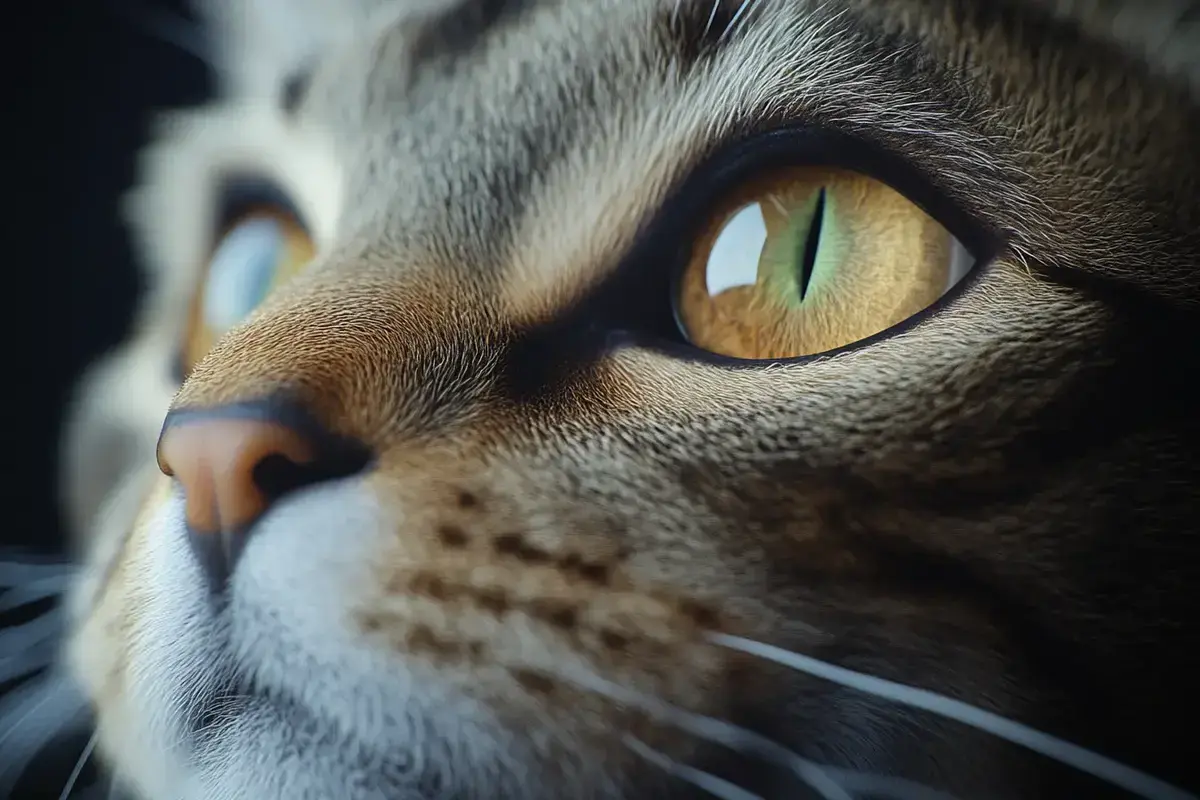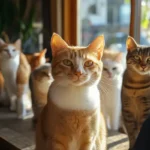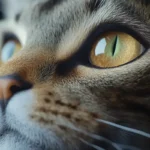Summary
- 🐱 Unique Pupil Shape: Cats have vertical and slightly oval pupils, optimized for hunting.
- 🔍 University of Berkeley Study: Links pupil shape to predation, highlighting their role in identifying prey.
- 🌓 Pupil Adaptability: Cats’ pupils change size to control received light, essential for their night vision.
- 🚨 Ocular Health: Signs like dilated or asymmetrical pupils require a veterinary exam to prevent health issues.
Cats’ eyes have always captivated and mystified humanity. Among the most intriguing features of these felines is the unique shape of their pupils. Vertical and slightly oval, they are far more than mere windows into the feline soul; they are critical evolutionary adaptations for their survival. This article delves deeply into why cats possess these vertical pupils, examining their role in hunting, ocular health, and how they affect daily behavior.
The Unique Characteristics of Cat Pupils
Cat pupils are distinguished by a vertical and slightly oval shape, a characteristic that aids in their nocturnal activities. This peculiarity is not only fascinating on an aesthetic level but also plays a crucial role in their ability to hunt in low-light conditions, mimicking the precision of a hunting snake.
The Evolutionary Advantage of Vertical Pupils
The vertical shape of cat pupils maximizes their efficiency as predators. It allows them to accurately gauge the distance between themselves and their prey, a vital skill for a hunter. Additionally, this feature enhances their close-up vision, essential when capturing quick and small prey.
Results from the University of Berkeley Study
A study conducted by the University of Berkeley has established a clear link between the shape of cat pupils and the type of prey they hunt. This link highlights that vertical pupils are particularly suited to the predation of small creatures that require a stealthy approach and a quick, precise attack.
Indicators of Ocular Health in Cats
Pupils that remain dilated or present anisocoria (different pupil sizes) can be warning signs of underlying health issues. These symptoms require immediate veterinary attention to prevent more severe complications.
Adaptation of Pupils to the Environment
Cat pupils dynamically adapt to the surrounding light. In broad daylight, they narrow to thin slits to minimize excessive light entry, while in darkness, they dilate to maximize the amount of captured light, facilitating night vision.
Diversity in Pupil Shapes and Sizes
Depending on various environmental factors and their emotional state, cats’ pupils can present different shapes and sizes. This adaptability allows cats to remain efficient predators in a variety of lighting conditions and stressful situations.
Consulting a Veterinarian for Anomalies
It is crucial for cat owners to closely monitor their pets’ eye health. Any unusual changes in the appearance of the pupils should be examined by a veterinarian to ensure appropriate management of potential issues.
In conclusion, cats’ vertical pupils are not only captivating to observe; they are a sophisticated feature that enhances their ability to survive and thrive as nocturnal predators. For cat owners, being attentive to signs of ocular problems and regularly consulting a veterinarian are essential to maintaining the health and well-being of these fascinating animals.







